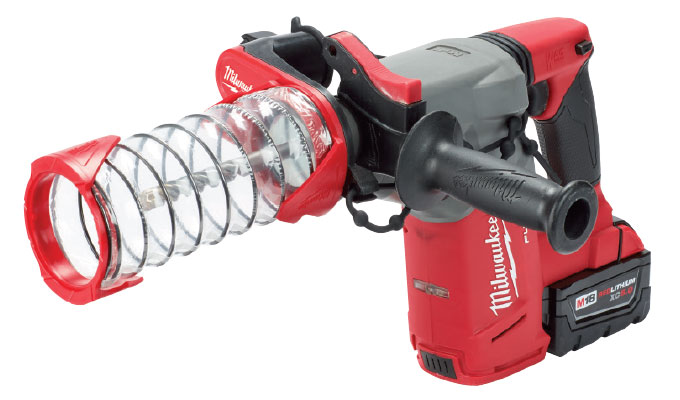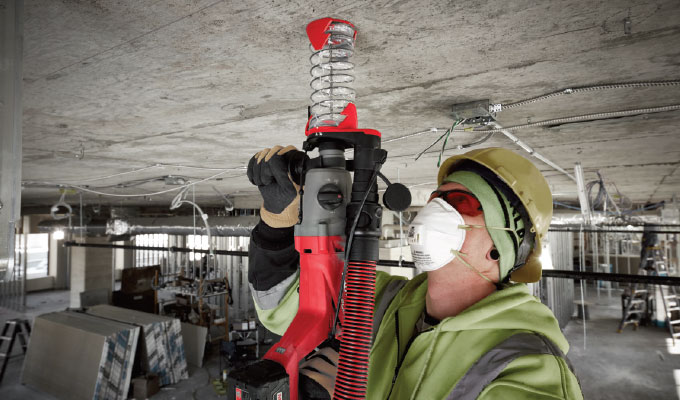September 23 marked a year since the Occupational Safety and Health Administration (OSHA) sought to bring worker protections into the forefront by starting to enforce its construction standard on respirable crystalline silica, 29 CFR § 1926.1153. Found in materials like concrete, tile, rock, stone and brick, exposure to silica dust can be a major cause of lung cancer, silicosis, chronic obstructive pulmonary disease, and kidney disease in America’s tradesmen.
The standard established a new 8-hour time-weighted average (TWA) Permissible Exposure Limit (PEL) of 50 µg/m3, an action level (AL) of 25 µg/m3, and a host of ancillary requirements. Simply put, it identified that employers could limit harmful dust exposure by using equipment that met with one of the following compliance methods:
- Table 1: Compliance through OSHA’s specified control methods. Essentially, a table that matches 18 common construction tasks with effective control methods.
- Objective data: Data provided by the manufacturer that proves users are below PEL when using their product.
- Self-monitoring program: This can be the most time-consuming and costly method for employers. They must purchase and utilize air quality monitoring systems, acquire test data, and provide employee medical assessments.
Despite some delays in enforcement, OSHA has spent the past year ensuring that the final rule is followed, even making room for “good faith” efforts by employers if they show they’re on track toward compliance. However, for employers who haven’t met (or been on track to meet) the above methods, the fines have been sizeable.
It’s a regulation that has caused ripples throughout the construction industry. And, while the costs associated with arming workers with the tools they need to be compliant has often been steep, the long-term protection is priceless. In fact, OSHA estimates that the regulation will save more than 600 lives annually and prevent more than 900 new cases of silicosis every year.
But this hasn’t just impacted employers and workers. Manufacturers too have been influenced by the regulation and challenged to ensure that the best interests are met for the users of their products.
FULL-SYSTEM COVERAGE
When it comes to the tools used on the jobsite, many employers purchase from one main manufacturer for ease of customer service, battery maintenance, and management. With that in mind, it’s important that manufacturers ensure that every component in the system they provide is designed to effectively remove dust.
For instance, while Milwaukee Tool has had a history of developing solutions with dust collection in mind, the regulation provided a unique opportunity to ensure its full system was covered. After all, the company provides a full range of corded and cordless grinders and rotary hammers for all drilling, chipping, cutting, and surfacing applications, so it was crucial they provide users the ability to work more safely when using these tools. To meet the need, Milwaukee launched the largest expansion of its Dust Extraction System to-date, all completely compliant with the OSHA regulation.
The heart of the system, an 8-Gallon Dust Extractor, provides users with an OSHA-compliant solution for the regulation on respirable crystalline silica dust (29 CFR 1926.1153). An automatic filter cleaning mechanism activates on the main filter to help maintain consistent airflow and suction at 148 CFM in tough dust-producing applications. The extractor’s unique two step filtration system includes a 99.97 percent efficient HEPA filter as the final step of filtration after the main filter, leading to cleaner air, increased lifetime of the HEPA filter, and reduced service cost over time. All these features lead to a product that produces power and consistent suction for cleaner air.
Launched in conjunction with the new 8-Gallon Dust Extractor are 5-inch and 7-inch surface grinding dust shrouds, a 5-inch cutting dust shroud, SDS-Max Dust Extraction Attachment, SDS-Max Chisel Boot, and Vacuum Bits that work with the Extractor to maximize dust collection during concrete applications.
With the launch of the 8-Gallon Dust Extractor and accessories, Milwaukee’s full lineup of rotary hammers and grinders were compliant through either Table 1 or Objective Data Requirements—offering huge peace of mind for any employer on the Milwaukee M18™ or M12™ Systems.

Milwaukee introduced the DUST TRAP™ Drilling Shroud at the beginning of this year—the first OSHA compliance solution that meets objective data requirements without the use of a vacuum. The clear unit attaches to the front of the tool to capture dust.
KEEPING IT SIMPLE
Due to the impact of this regulation, manufacturers also need to consider offering easier ways for workers to comply with the tools they currently own. For contractors, time is money so making sure they find the simplest ways to be compliant for the lowest cost of ownership is crucial. This is where the benefit of universal solutions is truly unmatched.
Four years before OSHA began enforcing the regulation, Milwaukee introduced the world’s first and only universal self-powered dust extractor—the M12 HAMMERVAC™ Universal Dust Extractor. Compatible with all major power tool brands of SDS Plus Rotary Hammers and AC/DC Hammer Drills, the M12 Universal HAMMERVAC is the only tool of its kind and, per HEPA standards, its certified HEPA filter removes 99.97 percent of particles greater than 0.3 µm.
This year, Milwaukee updated this unit with a new dust box to allow users to easily clean the filter with the press of a button—thus making any tools equipped with it OSHA compliant through Table 1 requirements.
The company has also spent considerable time finding fresh, alternative solutions that offer easy compliance. Recognizing that employers are shouldering the high cost of being compliant, Milwaukee introduced the DUST TRAP™ Drilling Shroud at the beginning of this year—the first OSHA compliance solution that meets objective data requirements without the use of a vacuum. A completely universal accessory, the DUST TRAP offers an efficient and flexible way for users to adjust to the daily demands of the jobsite while remaining compliant. The DUST TRAP is built with a clear sleeve which provides visibility when lining up the hole and during the drilling application. Once attached to the front of the rotary hammer, it keeps dust contained throughout the duration of the drilling process.
LEADING THE WAY
As the regulation continues enforcement now and into the future, it will be up to manufacturers like Milwaukee Tool to continue leading the way with new and innovative products that offer employers cost-effective and simple ways to comply.
ABOUT THE AUTHOR
Kevin Gee is a senior product manager for Milwaukee Tool. For more information, visit www.milwaukeetool.com.
____________________________________________________________________
Modern Contractor Solutions, October 2018
Did you enjoy this article?
Subscribe to the FREE Digital Edition of Modern Contractor Solutions magazine.



